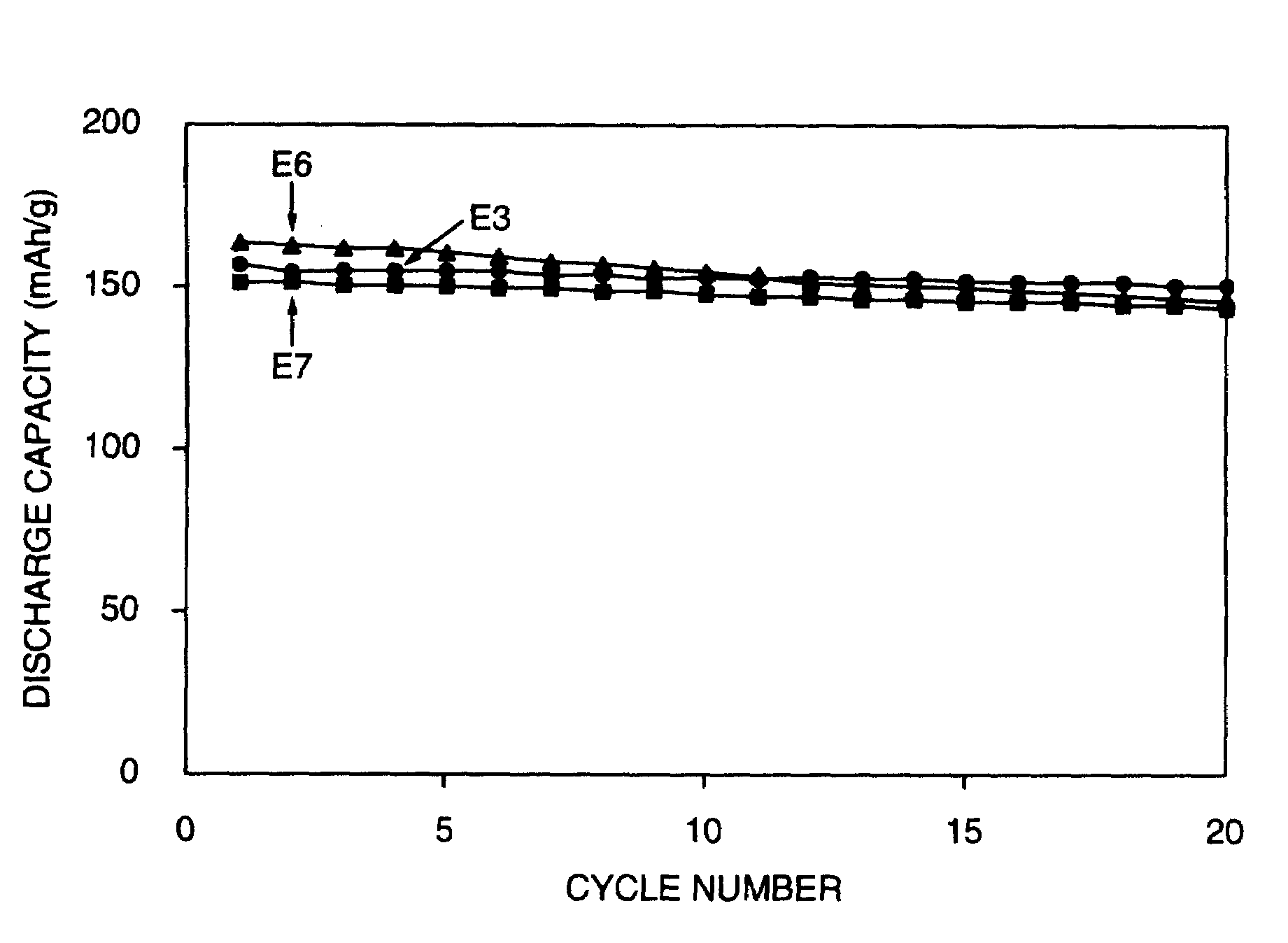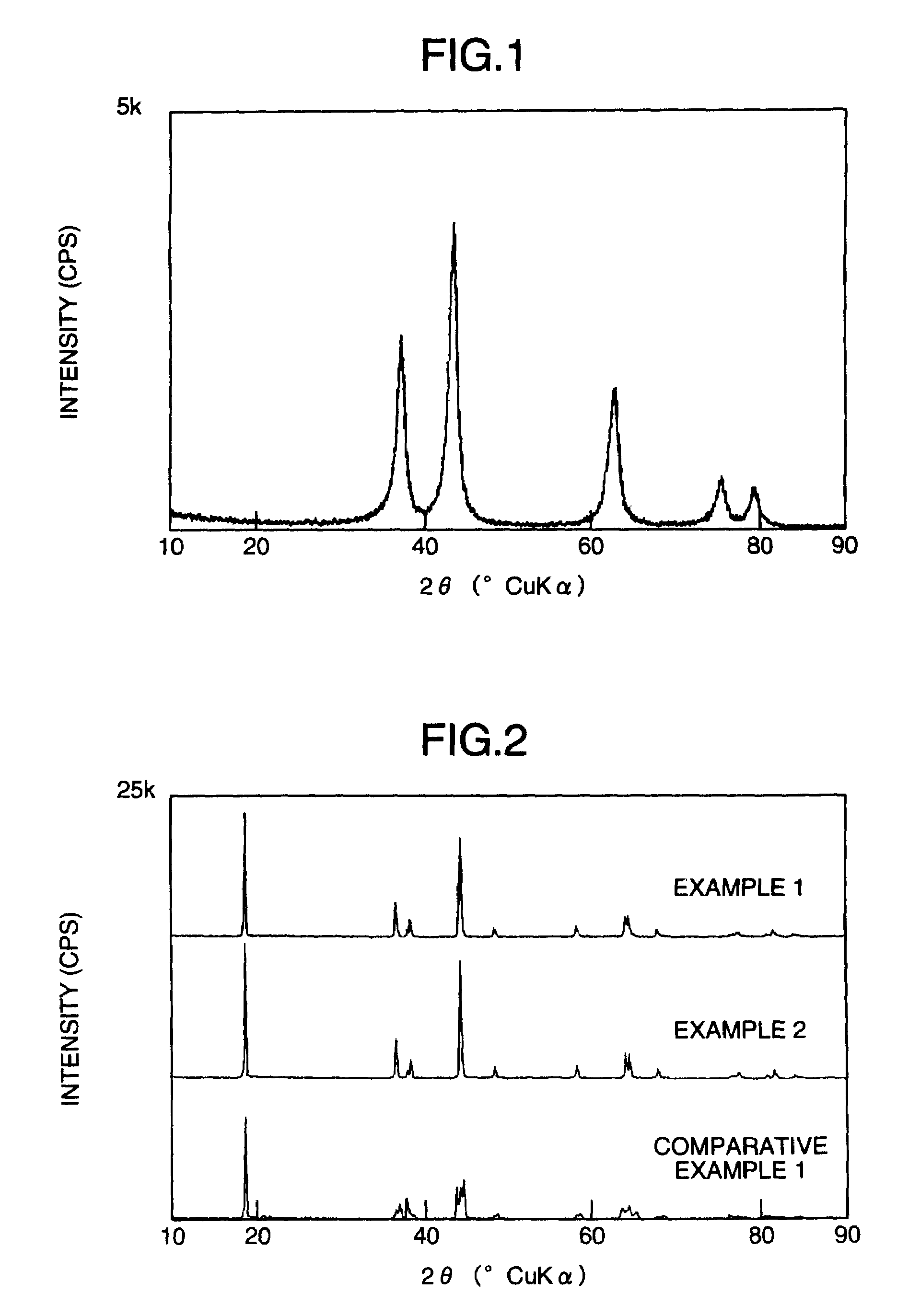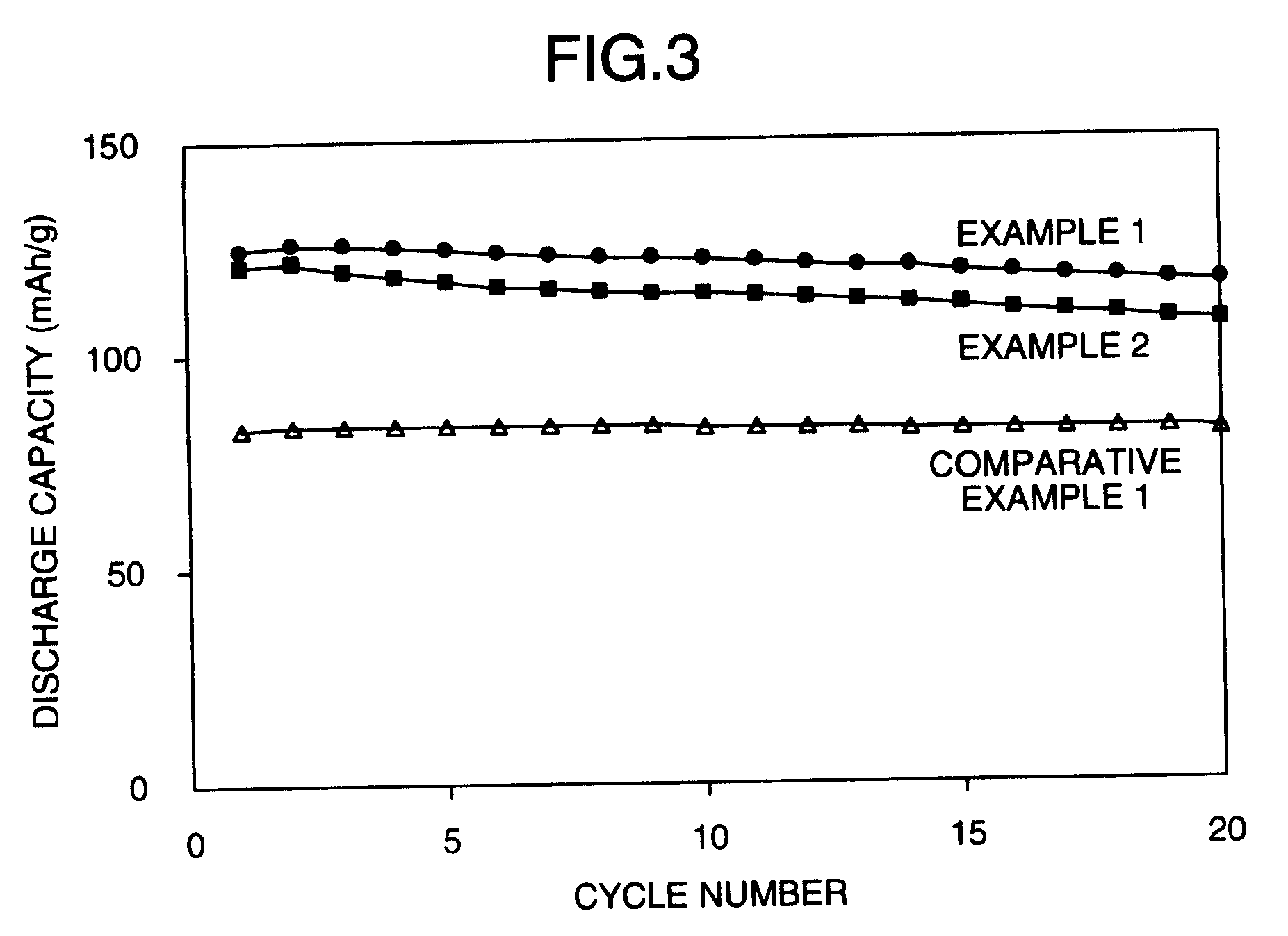Method for preparing positive electrode active material for non-aqueous secondary battery
a secondary battery and active material technology, applied in the field of preparing positive electrode active material for non-aqueous secondary batteries, can solve the problems of difficult preparation of complex hydroxid
- Summary
- Abstract
- Description
- Claims
- Application Information
AI Technical Summary
Benefits of technology
Problems solved by technology
Method used
Image
Examples
example 1
(1) Synthesis of Positive Electrode Active Material
[0069]Dinickel trioxide (mfd. by Hayashi Pure Chemical Industries Ltd., Japan, nickel content 73.4% by weight; BET specific surface area 134 m2 / g; powder X-ray diffraction measurement result is shown in FIG. 1), manganese carbonate (mfd. by Wako Pure Chemical Industries Ltd., Japan, guaranteed reagent, manganese content 46.4% by weight) and lithium hydroxide (mfd. by The Honjo Chemical Corporation, Japan) were weighed out in a molar ratio of respective elements, Li:Ni:Mn, of 1.0:0.5:0.5, and were then thoroughly mixed in a mortar. The powder mixture thus obtained was placed in a box type furnace and was fired by keeping it in the air at 1000° C. for 15 hours, to obtain a positive electrode active material E1 for non-aqueous secondary battery (a material corresponding, in the composition formula (I), to a case wherein x=0.5 and y=0, namely Li[Ni0.5Mn0.5]O2). The result of powder X-ray diffraction measurement of the electrode material...
example 2
(1) Synthesis of Positive Electrode Active Material
[0075]The same procedures as in Example 1 were followed except for using dimanganese trioxide (mfd. by Kojundo Chemical Laboratory Co., Ltd., Japan, purity 99.9% by weight) as the manganese starting material, to obtain a positive electrode material E2 for non-aqueous secondary battery. The result of powder X-ray diffraction measurement of the material E2 is shown in FIG. 2. It was confirmed that the material E2 also had a layered structure identical with that reported by Ohzuku et al.
(2) Charging-Discharging performance Evaluation in a Case where the Active Material E2 was Used as the Positive Electrode Active Material of Lithium Secondary Battery
[0076]A flat plate type battery was prepared by using the compound particles E2 obtained above, and subjected to a charging-discharging test in the same manner as in Example 1.
[0077]The change of discharging capacity is shown in FIG. 3. The discharging capacities at the 10th cycle and the 2...
example 3
(1) Synthesis of Positive Electrode Active Material
[0078]Dinickel trioxide (mfd. by Hayashi Pure Chemical Industries Ltd., Japan, nickel content 73.4% by weight; BET specific surface area 134 m2 / g; powder X-ray diffraction measurement result is shown in FIG. 1), tricobalt tetroxide (mfd. by Nihon Kagaku Sangyo Co., Ltd., Japan, Product name of PRM-73; cobalt content 72.8% by weight), manganese dioxide (mfd. by Kojundo Chemical Laboratory Co., Ltd., Japan, 2N grade reagent) and lithium hydroxide (mfd. by The Honjo Chemical Corporation, Japan) were weighed out in a molar ratio of respective elements, Li:Ni:Mn:Co, of 1.04:0.34:0.42:0.20, and were then thoroughly mixed in a mortar. The powder mixture thus obtained was placed in a box type furnace and was fired by keeping it in the air at 1000° C. for 15 hours, to obtain a positive electrode active material E3 for non-aqueous secondary battery (a material corresponding, in the composition formula (I), to a case wherein x=0.44 and y=0.10,...
PUM
| Property | Measurement | Unit |
|---|---|---|
| temperature | aaaaa | aaaaa |
| temperature | aaaaa | aaaaa |
| temperature | aaaaa | aaaaa |
Abstract
Description
Claims
Application Information
 Login to View More
Login to View More - R&D
- Intellectual Property
- Life Sciences
- Materials
- Tech Scout
- Unparalleled Data Quality
- Higher Quality Content
- 60% Fewer Hallucinations
Browse by: Latest US Patents, China's latest patents, Technical Efficacy Thesaurus, Application Domain, Technology Topic, Popular Technical Reports.
© 2025 PatSnap. All rights reserved.Legal|Privacy policy|Modern Slavery Act Transparency Statement|Sitemap|About US| Contact US: help@patsnap.com



